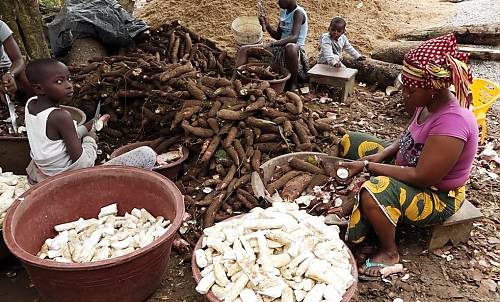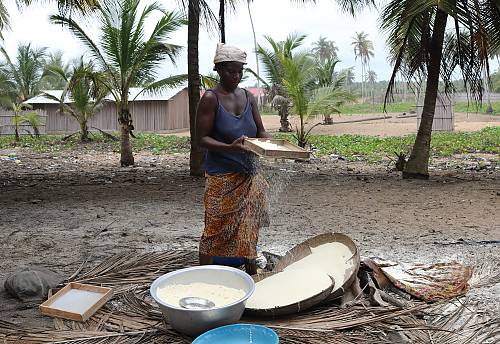Skills related to Attiéké production in Côte d’Ivoire
Inscribed in 2024 (19.COM) on the Representative List of the Intangible Cultural Heritage of Humanity

Attiéké is a dish made from steamed cassava tubers. Produced by the lagoon peoples of Côte d’Ivoire, the dish involves growing and harvesting the cassava tubers, grinding and mixing them with fermented cassava to prepare the semolina, and steaming the semolina to prepare the dish. After cooking, the attiéké is removed from the heat and scooped into a container to cool. It is then packaged and distributed in baskets lined with cassava leaves. Attiéké is traditionally produced by women for household consumption. Women prepare, cook, preserve, and sell the attiéké, while men grow, harvest, transport and grind the cassava. The knowledge and skills are passed down orally and through observation within families. Attiéké is an accessible and affordable meal that has become a staple in family meals, but also in restaurants and during ceremonies. The related knowledge and skills play an important role in the social life of communities. Mastering the production of attiéké guarantees financial autonomy and social integration for women and girls. An integral part of cultural identity in Côte d’Ivoire, its production contributes to the empowerment of young girls without encroaching on their schooling.









